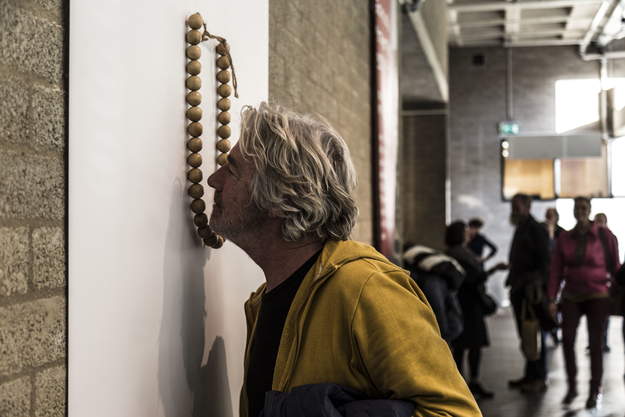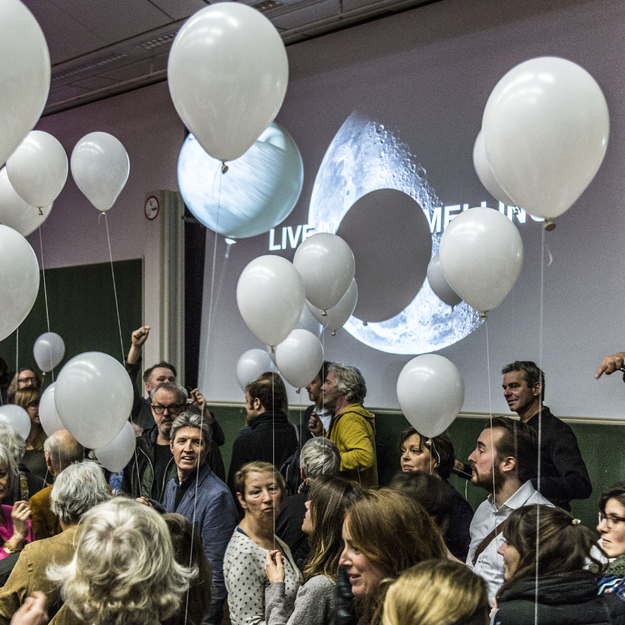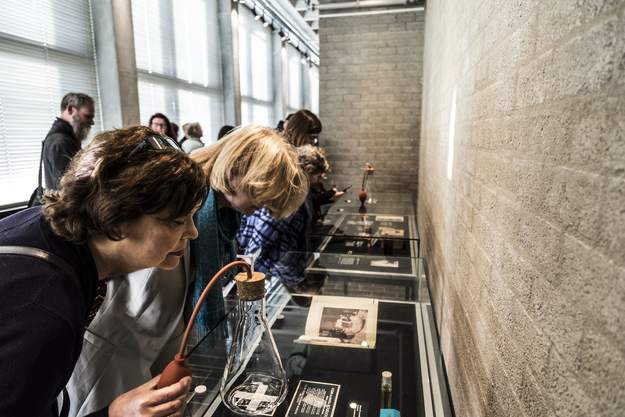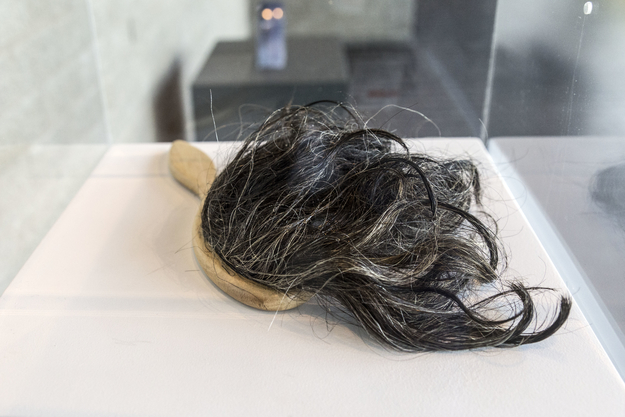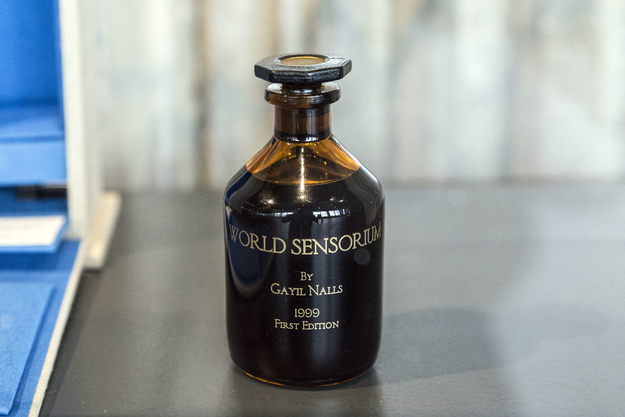A few weeks ago, it was announced that seven exoplanets have been discovered at about 40 light-years from the Earth. According to estimates the planets are rocky, similar in scale to Earth and it seems that although their temperature is slightly cooler than that of the Earth, three planets out of the seven might be habitable. Even though it may take a while until we leave our Earthly life behind and move to another celestial body, there is nothing wrong with being prepared for what may come! Another reason for visiting the exhibition is therefore to train your sense of smell to the new olfactory environment of outer space. You can easily do that by sniffing the installation We Colonised the Moon by Sue Corke and Hagen Betzwieser.
The smell had been presented to the audience in the form of a lecture performance combined with a happening: the Live Moon Smelling was the highlight of the symposia preceding the opening of the exhibition. After Hagen Betzwieser had described the project in a lively manner, guests received white balloons filled with the smell of the moon as well as goggles and toothpicks. After counting down aloud, we all pricked the balloons. An ethereal, metallic, ozonic, cool smell quickly filled the air. It wasn’t necessarily unpleasant, though it resembled the scent of gunpowder.
You may wonder if this is really how the surface of the Moon smells - well, even though only a very few of us had actually been lucky enough to be confronted with the real smell of outer space, those who had experienced it, confirmed that the duo hit the lunar aroma accurately. Those who missed the symposium and the Live Moon Smelling happening, may sniff at the work displayed in the show!
The research-based exhibition is made up of two parts: a number of reconstructed scents bring us closer to historical times while other pieces on display are conceptual artworks reflecting on themes like memory, nationalism, utopia or identity.
Olfactory reconstructions are in many cases somewhat speculative: they rely on personal accounts, visual representations or textual descriptions. Artists, perfumers and chemists need to create scents from these fragmentary information. (The olfactory reconstruction of the Battle of Waterloo (1815) for instance is based on the painting bearing the same name by Jan Willem Pieneman (1824) while the smell of Edward Kienholz’s The Beanery was reconstructed on the basis of a letter by his widow.) For this reason, their authenticity may be questioned, but nevertheless, they still might add an unexpectedly significant layer of perception to our ideas about war, the urban landscape or religion.
The exhibition puts a special emphasis on Futurism (we will cover the fascination of Futurists with multisensory experiences and particularly, scents in another blogpost soon), but the show at VU does not stop at Marinetti and his fellows: besides olfactory reconstructions, it showcases Duchamp’s fascination with fragrances, elaborates on the role of smell in Fluxus (Wim T. Schippers, Pieter Brattinga) and presents conceptual, multisensory artistic practices concerned with volatile heritage (Job Koelewijn, Peter de Cupere, Birthe Leemeijer). Although no exhibition can aspire to be fully comprehensive, the show definitely aims to present curious sniffers with a broad overview/oversmell.
The exhibition project is part of the embedded Phd research project of Caro Verbeek entitled In Search of Scents Lost investigating the role of olfaction during the avantgarde, chronologically and geographically stretching from 1913 (first Futurist manifesto on smell) to 1959 (final Surrealist exhibition featuring a perfume). In her research she focuses in the interrelations of heritage and nationalism, as well as the role of scents in evoking memories and the challenges of the recreation of smells and modes of display.
Where? & When?
The exhibition is open during opening hours of the Main Building Vrije Universiteit Amsterdam until 23rd May. The exhibition area is at the Main Building, first floor, near the Aula. (Please be aware other activities also take place in that area.)
Monday to Friday: 07:00 to 23:00
Saturday: 08:00 to 18:00
Sunday: 10:00 to 18:00
Holidays: 10:00 to 18:00
More info:
